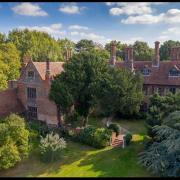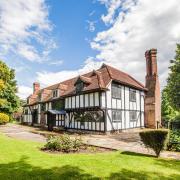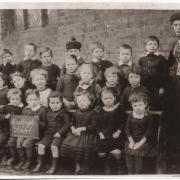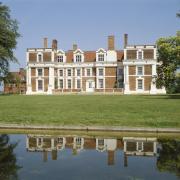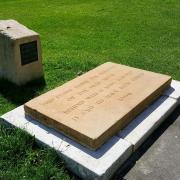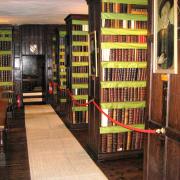From ‘having turnips improperly’ to biting someone’s nose off, Essex folk were sent to Australia as punishment for all sorts of misdemeanors. John Wright delves into the weird and wonderful stories of Essex convicts
Essex provided its fair share of some 136,000 men and 25,000 women transported to Australia in the 80 years since the first 11 ships sailed from Portsmouth in May 1787 to begin their awful eight-month journey on a creaking, rolling ship. One of these people was 21-year-old Chelmsford farmer James Davey for ‘stealing a flour sack’ – it was full, presumably.
In those days, you could hang for stealing property valued at £1 (say £100 today). However, convicts were often reprieved and banished, usually for seven years, women becoming assigned servants, men sent to farm. Davey seemed happy about this, settling in Van Diemen’s Land (Tasmania), marrying Catherine Jordan in 1819 and having seven children. Later asked by a historian how he’d sum up his family life, he replied by saying he ‘was especially proud of Ploughboy, his powerful horse.’

The First Fleet arrived in Botany Bay with some Essex convicts aboard, considered Australian royalty today as the country’s ‘founders’, including labourer William Lane who stole pickled pork, butter, six gallons of brandy and three casks. Receiving 2,000 lashes in 1790 for stealing 13 pounds of biscuits, he was allotted a 30-acre grant in 1796 where he farmed on the Hawkesbury River in New South Wales.
Other Essex First Fleeters, convicted at Chelmsford, were Isaac Lemon, who had stolen a horse and died on the voyage out, William Rickson, Anthony Rope, Thomas Hilton Tenant (alias Phillip Devine), John Mansfield (stole eight pigs) and servant Frances Davis, 22, who’d broken into Agnes Bennett’s house and stolen a bag containing £178 12s 6d and bills of exchange totalling £654 14s. Tried at Chelmsford, Essex Lent Assizes, she arrived in Sydney and the Australian summer in January 1788 aboard the Lady Penrhyn. Davis spent four years on Norfolk Island in the South Pacific and returned at least once to England, returning to marry free settler farmer Martin Mintz in Sydney.

Transported Essex convicts are mentioned in a January 2021 article online From Essex to Australia: the story of convict Jeremiah by criminal historian Dr Nell Darby, who cites the Chelmsford Chronicle as the source of their names and crimes, such as beer shop owner William James ‘for receiving stolen wheat at Tendring and James Lewis for bigamy. The 52-year-old had married Jane Payne in Hertfordshire, but also Ann Jones in London, whilst knowing that his first and legal wife, Elizabeth Lewis, who he had married at Waltham Abbey, was still alive.
‘Meanwhile, seaman William Keys, 40, had stolen a slop [gown] from William Goldaker at Frating, Thomas Bragg, 40, labourer, two coppers at Prittlewell, and 30-year-old William Harrington, labourer, nine chickens at Ridgewell.’ The 18-year-old Edward Mitchell (aka Edward Brand) got 14 years for stealing ‘various articles from James Copons at Shenfield and Thomas Hills (aka Beddall), 17,’ who’d stolen money and goods from a doctor at Great Bardfield.

Labourer friends William Elliott (aka Benjamin Ruddick) and John Jones, 17, got life for stealing a pony. ‘Jeremiah Linnett (aka Bridges), 38, a ragman who had stolen a plough iron in Great Bentley,’ was one convict Darby’s research suggests may have been successful in arranging for his wife, Mary Ann (née Cooper), and children (William, 10, and Mary, 7) to gain a free passage to follow him to Australia. ‘Three men from Bradwell-on-Sea,’ Darby writes, ‘were named as “respectable persons to whom petitioner’s family are known” – the rector of the parish, a magistrate, and a local farmer.’
Sometimes a convict was put in charge of the gaol, like Romford-born John Petchey, who as a labourer in March 1810, was transported for 14 years for receiving stolen goods. After arriving in the Indefatigable in Van Diemen’s Land, he behaved so well that from 1816 to 1823 he was made keeper of the Hobart Town Gaol, and even remained there after once being sacked for neglect of duty.

‘He was granted 400 acres on the South Arm peninsula,’ W.E. Goodhand wrote in the Australian Dictionary of Biography. ‘Though he had frequent disputes with neighbours, by 1825 he had cultivated 150 acres, had 1,000 sheep, 20 cattle, a substantial house, barn, outbuildings, another 1,000 acres under lease and ten convict servants, Petchey marrying Elizabeth, née Callaghan, who was assigned to him as a convict servant.
‘In June 1824, Petchey sailed for London with wattle bark extract to interest the English tanning trade. For this discovery he was awarded a medal by the Society of Arts, Commerce and Manufactures.’ Returning to Hobart, he became one of the colony’s most prosperous merchants, owning a brewery, pub, store and woodyard.
Most profitable was his victualling and cartage business, which he ran from Kangaroo Point to Sullivan’s Cove for his three Derwent River ferries. His 389-ton ship, Sir George Arthur, in 1838 was the largest built in the colony, and he started hunting the southern right whale. Ironically, it wasn’t on such dangerous trips that Petchey lost his life at sea in 1850. He drowned with six others when their sailing boat in the Hobart Regatta capsized in a squall.

In Tasmania, serious offenders were sent to Port Arthur Penitentiary on the island’s south-eastern peninsula, its narrow neck guarded by a line of vicious dogs. Here convicts were charged with trivial offences, such as ‘stealing vegetables, pilfering bread from a fellow prisoner, making away with a prisoner’s shirt, having a pigeon improperly,’ Phillip Hilton and Susan Hood wrote in Caught in the Act: Unusual Offences of Port Arthur Convicts.
John Aylett (Prisoner No. 848), tried at the Maldon Quarter Sessions in 1837 for stealing a gelding, arrived on the Minerva and at Port Arthur got nine months hard labour in a chain gang after absconding from the Public Works in Hobart, his gaol record stating, for ‘being in bed with another man in an indecent position.’ Colchester-born William Orrin arrived in Tasmania on the Equestrian in 1844 for ‘stealing sundry fruits.’ While on probation at the Prisoners’ Barracks at Seven Mile Creek, he got another six weeks for ‘trafficking with old prisoners in flannel shirts.’
Handley Green-born Elijah Bretnor was transported in 1853 for stealing a peck (16 pounds) of malt and in Tasmania had trouble settling in to work gangs, getting a month in solitary at the Prisoners’ Barracks in Launceston, for ‘insubordination in threatening to split the overseer’s skull with his spade.’ His offences continued until he received his Certificate of Freedom in 1858. He lived to the age of 80 after spending the last 30 years of his life in and out of Port Arthur and the Lunatic Asylum at New Norfolk. Oddly, he had been given four months hard labour while at Ross, for the peculiar crime of being ‘drunk and attempting to rescue a prisoner.’

The list of offences committed by the inmates of the Port Arthur Penitentiary goes on: ‘Having turnips improperly…washing his shirt during Divine Service…having lollipops in his possession…setting fire to his bedding…drawing improper figures on his slate…gross filthiness within the barrack square…wilfully breaking his wooden leg…apprehending Godfrey Moore and biting his nose off…groaning at the Lieutenant Governor…and concealing a man under her bed.’ Best of all was ‘Billy’ Hunt, his crime ‘absconding’. Nothing unusual about that, except that Billy was ‘dressed as a kangaroo at the time and attempting to hop to freedom.’




